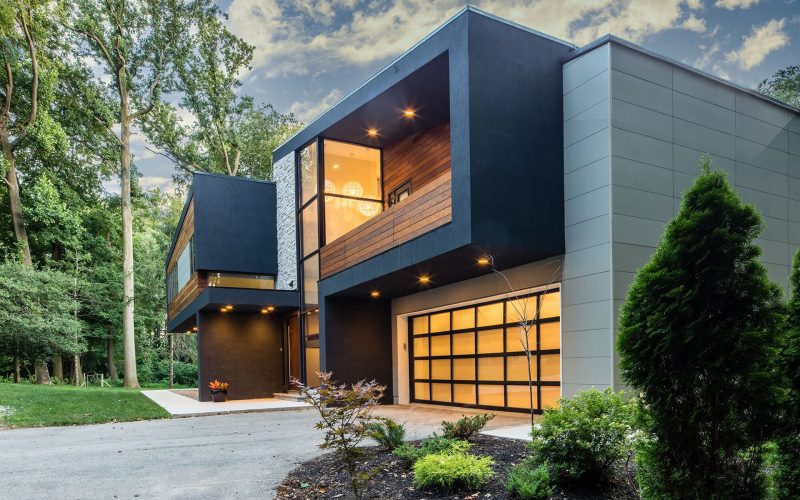Introduction
In an age where wildfires pose an increasing threat to homes and communities, the science of building fire-resistant homes has become a beacon of hope. This article delves into the scientific aspects behind creating homes that can withstand the fury of wildfires. Join us as we explore the latest technologies and innovations that make your living environment safer through the science of fire-resistant construction.
The Imperative for Fire-Resistant Homes
The urgency for fire-resistant homes is underscored by the rising frequency and intensity of wildfires. Here’s why it’s imperative:
1. Preserving Lives
Fire-resistant homes prioritize the preservation of lives. These homes are engineered to endure wildfires, providing a refuge during fires, which can ultimately save lives.
2. Safeguarding Property
Beyond human safety, fire-resistant homes aim to safeguard property. By minimizing damage, these homes protect your investment, ensuring your property remains intact, even in the face of a wildfire.
3. Environmental Responsibility
Constructing fire-resistant homes is not just a personal choice; it’s an environmentally responsible one. By reducing the risk of wildfires, we can help protect natural habitats and decrease air pollution.
The Science of Fire-Resistant Homes
Building fire-resistant homes is an amalgamation of science, technology, and innovative design. Here are the key scientific components that make the science of fire-resistant construction a reality:
4. Fire-Resistant Materials
The choice of building materials is paramount in the science of fire-resistant homes. Recent advancements have led to the development of materials with high fire resistance. These include non-combustible siding, fire-rated glass, and fire-resistant roofing materials. These materials substantially slow down the spread of flames.
5. Ember-Resistant Features
Embers carried by the wind are a common ignition source during wildfires. Fire-resistant homes incorporate ember-resistant features such as ember-resistant vents, screens, and eaves. These features prevent embers from entering your home and igniting fires from within.

6. Smart Technology
Integrating smart technology into fire-resistant homes enhances safety and resilience. Automated fire detection and suppression systems, smart ventilation solutions, and evacuation assistance are all integrated to make these homes safer.
7. Fire-Resistant Landscaping
The area surrounding the home plays a significant role in the science of fire-resistant homes. Fire-resistant landscaping involves planting fire-resistant vegetation, maintaining safe distances between trees and structures, and clearing dead vegetation to create a defensible space.
Comparative Analysis: Fire-Resistant Homes vs. Conventional Homes
Let’s compare the science of fire-resistant homes to conventional homes in terms of safety and resilience:
Fire-Resistant Homes
- Fire Resistance: High
- Protection: Excellent
- Valuable Preservation: High
- Environmental Responsibility: Yes
Conventional Homes
- Fire Resistance: Low
- Protection: Limited
- Valuable Preservation: Moderate
- Environmental Responsibility: No
Fire-resistant homes offer higher fire resistance, excellent protection, and better preservation of property, all while being environmentally responsible. In contrast, conventional homes have lower fire resistance, limited protection, and moderate preservation of property, with less environmental responsibility.
Mastering the Science of Fire-Resistant Living
After exploring the science and comparisons, it’s time to master the science of fire-resistant living. Here are some additional scientific tips to help you succeed in making your home a safer haven during wildfires:
8. Regular Maintenance
Regular maintenance is essential to ensure all fire-resistant features and materials remain effective over time. Regular inspections and maintenance can make a significant difference.
9. Emergency Preparedness
Being prepared for emergencies, even in a fire-resistant home, is crucial. Create an emergency plan, assemble an emergency kit, and stay informed about local fire conditions.
Conclusion
The science behind building fire-resistant homes is a testament to human innovation and determination. Protecting lives, preserving property, and promoting environmental responsibility are all attainable with fire-resistant homes. As you embark on the journey to master the science of fire-resistant living, remember the strategies outlined here and embrace the peace of mind that comes with knowing your home is a fortress of safety during wildfires. With determination and careful planning, you can master the science of fire-resistant living and make your home a safe haven for your family and property in the face of growing wildfire threats.












